Best 25 Foodie Travel Destinations For Authentic Cuisine
Do you plan your trips around monuments or meals? For many, the real landmarks are street markets, bakeries, and kitchens where a culture reveals itself through flavor. The most memorable food journeys aren’t about Michelin stars; they're about meals shaped by history, geography, and generations of tradition. These destinations invite you to eat with locals, discover dishes that rarely leave their borders, and return home with stories told through taste.
Italy: A Nation Of Regional Tables
Italy has long been the dream of travelers seeking comfort food, but the truth is, there is no single Italian cuisine. Each Italy region guards its traditions fiercely. In Naples, pizza remains sacred, with dough blistered by wood fire and crowned with little more than tomato and mozzarella. In Emilia-Romagna, the pride is fresh pasta—tagliatelle al ragù, tortellini in broth, and lasagna layered with béchamel.
Farther south, Sicily tells its story through arancini, caponata, and cannoli—Arab spices, Spanish techniques, and local ingredients all meeting on a plate. It means slowing down to notice these differences, savoring how landscapes from the Alps to the Mediterranean shape flavor.
Japan: Precision And Seasonality
Japan food culture is a philosophy of balance and presentation. Tokyo dazzles with sushi counters where chefs craft bites with reverence, while ramen alleys remind you that comfort food can be just as soulful. Osaka, “the nation’s kitchen,” thrives on casual delights like takoyaki and okonomiyaki, each bite layered with a variety of sauces and toppings.
Kyoto introduces you to kaiseki, multi-course meals where each dish reflects the season—bamboo shoots in spring, chestnuts in autumn. Even train stations serve gourmet bento boxes, or ekiben, showcasing regional specialties. For those who seek culinary sites that respect craft as much as flavor, Japan stands unmatched.
Mexico: Markets And Street Corners
Few countries capture the vibrancy of food like Mexico. Stepping into noisy mercados where stalls sizzle with tacos al pastor, tamales steamed in banana leaves, and cups of esquites topped with lime and chili.
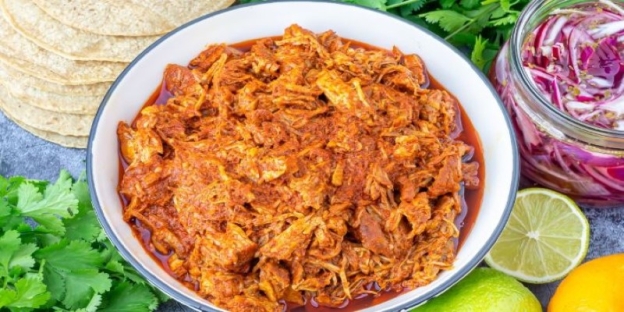
In Oaxaca, you taste centuries of indigenous and colonial blending in complex moles, while the Yucatán surprises with cochinita pibil, slow-roasted pork infused with achiote. Even small towns have their specialty; perhaps panuchos, perhaps marquesitas—and street food becomes a cultural education. These flavors are bold, messy, and unforgettable, which is why Mexico remains one of the most rewarding food adventures you can take.
Spain: Tapas And Regional Pride
Spain invites travelers to savor their meals slowly and share them socially. Tapas in Seville might mean plates of fried anchovies and jamón ibérico, while Barcelona blends Catalan heritage with inventive modern dining. The Basque Country, particularly San Sebastián, has become a mecca for pintxos. These are small, jewel-like bites arranged on bar counters, each demanding a taste.
Inland, Castilla y León celebrates roast lamb and hearty stews, contrasting with the coastal freshness of Galicia, where octopus is boiled, sliced, and dusted with paprika. To experience Spain through food is to understand its fierce regional pride, where each dish is a declaration of identity.
Thailand: A Kingdom Of Street Food
Thailand proves that some of the world's best meals can be found at stalls on crowded sidewalks. Bangkok's night markets lure you with steaming bowls of boat noodles and skewers glazed in chili sauce.
Chiang Mai, in the north, offers khao soi—noodles in coconut curry broth topped with crispy shallots—while the Isaan region delivers fiery salads of papaya, lime, and chili, paired with sticky rice. Eating here is not about ceremony but about joy, as flavors clash and harmonize in quick, unforgettable bites.
Morocco: Spice And Hospitality
Walk into Marrakech’s medina and the scent of cumin, cinnamon, and preserved lemons overwhelms you. Moroccan cuisine is built on slow patience—tagines bubbling gently with lamb, prunes, and almonds, or couscous steamed with vegetables and broth. Meals are always shared, often ending with mint tea poured high into glasses as a gesture of welcome.
Fez offers street-side snail soup, while coastal towns like Essaouira celebrate sardines seasoned with chermoula. Morocco shows how food doubles as both sustenance and storytelling, inviting outsiders into the rhythm of hospitality.
India: A Subcontinent On A Plate
Calling Indian food one cuisine is misleading. In Delhi, you’ll find butter chicken and naan baked in smoky tandoors. Travel south to Kerala and the flavors transform into coconut curries, dosas, and spiced seafood.
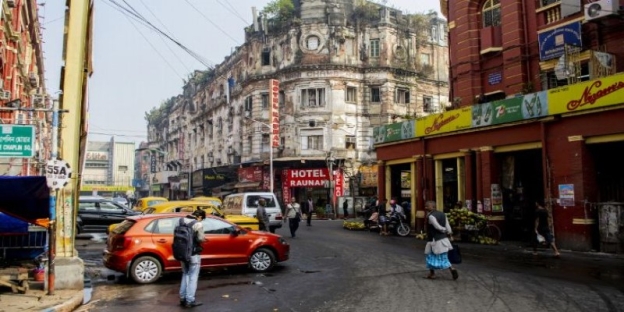
Gujarat surprises with vegetarian thalis, while Kolkata’s streets overflow with kathi rolls and mishti doi, a caramelized yogurt dessert. Even train journeys become tasting tours, with vendors selling chai and regional snacks at every stop. Exploring food in India is an endless discovery—one of the richest journeys in the world.
France: Terroir In Every Bite
In France, food is tied to the land, or terroir. French gastronomy is popular around the globe. Normandy pairs its cheeses with cider, Burgundy elevates beef with wine-based stews, and Provence celebrates herbs and olive oil. Paris may tempt with croissants and éclairs, but the country's heart lies in its villages—Lyon with bouchons serving hearty sausages, Alsace with its German-influenced choucroute, and Bordeaux with wines that demand respect.
Vietnam: Freshness In Balance
Vietnamese cuisine thrives on herbs, brightness, and contrast. In Hanoi, mornings begin with steaming bowls of pho, fragrance with star anise and lime. In central Hue, dishes are smaller and more intricate, a legacy of its imperial kitchens.
Ho Chi Minh City offers bánh mì and sizzling banh xeo, layered with bean sprouts and herbs. What ties it all together is freshness—mint, cilantro, basil, and chili balancing salt, sourness, sweetness, and heat. Few countries showcase such a perfect balance of flavors as Vietnam, offering a culinary experience that delights every sense.
Turkey: Where East Meets West
Turkey sits at a crossroads of continents, and its cuisine reflects that blend. Istanbul's streets are filled with doner kebabs and simit, sesame-crusted bread sold from carts. The southeastern city of Gaziantep, a UNESCO-recognized culinary hub, serves pistachio baklava alongside smoky kebabs.
Along the Aegean coast, seafood and olive oil are the dominant flavors, while the interior celebrates meze spreads featuring dips, cheeses, and grilled vegetables. Food here is communal, tied to both family and ritual, and travelers find that every region has its own culinary dialect.
Peru: From Andes To Ocean
Peru has quietly emerged as one of the world's hottest culinary destinations. Lima anchors the movement, where chefs combine Japanese, Chinese, and indigenous traditions into dishes such as ceviche, tiraditos, and lomo saltado. Cusco, high in the Andes, introduces alpaca meat and quinoa soups, while Arequipa celebrates rocoto relleno, spicy stuffed peppers baked with cheese.

The Amazon contributes exotic fruits and herbs, while coastal towns live off the sea. This spectrum makes Peru a magnet for authentic culinary travel—its diverse landscapes reflected perfectly in its food.
Portugal: Simplicity With Soul
Portugal may be small, but its cuisine leaves a lasting impression. Lisbon charms with pasteis de nata, custard tarts with blistered tops, while Porto thrives on francesinha, a layered sandwich smothered in beer sauce. Along the Algarve, grilled sardines are a quintessential summer ritual, often enjoyed with bread and wine.
Bacalhau, or salted cod, appears in hundreds of preparations, from croquettes to stews. What makes Portugal one of the most rewarding go-to cuisine places is its balance of simplicity and heart. Nothing here is wasted, and everything is seasoned with soul.
South Korea: Spice, Fermentation, And Fire
South Korea is electric in both pace and palate. Seoul’s markets overflow with tteokbokki, chewy rice cakes swimming in chili sauce, and hotteok, sweet pancakes filled with syrup. Barbecue is an essential ritual: diners grill bulgogi or samgyeopsal at the table, wrapping meat in lettuce with garlic and sauces.
Kimchi accompanies nearly every meal, a fiery, fermented counterpoint that defines Korean cuisine. From bibimbap in Jeonju to seafood stews in Busan, the culinary journey here shows how heat and depth are always in balance.
Ethiopia: Shared Plates And Ancient Flavors
Ethiopian cuisine transforms eating into a community. Meals center on injera, a spongy sourdough flatbread used as both plate and utensil. Dishes like doro wat, a spicy chicken stew, or misir wat, lentils simmered with berbere spice, are placed on top and eaten by hand.
Coffee ceremonies extend the experience, emphasizing hospitality and ritual. In Addis Ababa, restaurants celebrate both tradition and modern fusion, while rural villages preserve age-old recipes. Ethiopia proves that some of the most rewarding food adventures are about sharing—flavors and moments alike.
Argentina: Fire And Wine
Argentina is defined by its parrillas, or steakhouses, where beef is grilled slowly over wood coals and served simply with chimichurri sauce. Empanadas vary by region—Salta’s are spiced, Córdoba’s sweeter. In Mendoza, food pairs naturally with Malbec wine, while Patagonia celebrates lamb roasted over open fires.
Street vendors sell choripán, a humble yet beloved snack consisting of sausage tucked into bread with chimichurri. Argentina offers a culinary adventure for those who appreciate bold, traditional flavors and hearty, generous meals.
Indonesia: Archipelago Of Flavors
With more than 17,000 islands, Indonesia is a tapestry of cuisines. Bali offers babi guling, roasted pig served at ceremonies, while Java thrives on gudeg, young jackfruit simmered in coconut milk.

Padang cuisine from Sumatra lays out fiery rendang and sambals, creating buffets where diners pay for what they eat. Street food ranges from satay skewers to martabak pancakes stuffed with chocolate or cheese. Hopping islands and tasting how geography shapes the spice.
Lebanon: Mezze And Mountain Hospitality
Lebanon proves that food is about generosity. Beirut’s streets are filled with shawarma and falafel, while family tables groan under mezze spreads—hummus, tabbouleh, baba ghanoush, and warm flatbread.
In mountain villages, lamb is slow-cooked with a yogurt sauce, reflecting centuries of shepherd traditions. Lebanese wine and arak, an anise-flavored spirit, complete the experience. This mix of rustic and refined makes Lebanon one of the most compelling culinary destinations in the Middle East.
United States: A Patchwork Of Regional Cuisines
The United States resists definition because its food is so diverse. In New Orleans, Creole and Cajun kitchens simmer gumbo and jambalaya, while beignets are dusted with powdered sugar. In Texas, barbecue pits smoke brisket for hours, while California's farmers' markets fuel fresh, seasonal menus.
New England thrives on clam chowder and lobster rolls, while the Midwest treasures deep-dish pizza and hotdish casseroles. Embracing the patchwork, recognizing that each state tells its own story through food.
Malaysia: Flavors Of Fusion
Malaysia is where Malay, Chinese, and Indian cuisines intertwine in vibrant harmony. Kuala Lumpur's hawker centers burst with nasi lemak—rice steamed in coconut milk and paired with sambal, peanuts, and fried anchovies.
Penang is often hailed as the country's culinary capital, famous for its char kway teow noodles, asam laksa, and numerous variations of roti canai. What makes Malaysia unforgettable is the fusion itself: Indian curries ladled over Chinese noodles, Malay spices transformed with Cantonese techniques. Food-focused travel here teaches you that identity itself can be a flavor.
Georgia (The Caucasus, Not The U.S. State): A Feast Of Hospitality
In Georgia, food is synonymous with welcome. The supra, or traditional feast, is a cornerstone of culture, where long tables overflow with—cheese-filled bread—alongside grilled meats, walnut-studded salads, and khinkali dumplings filled with broth.
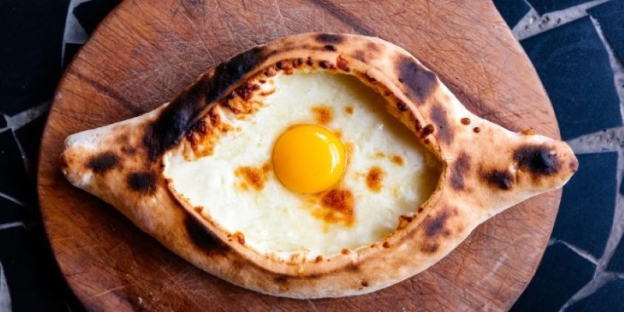
Wine flows endlessly, as Georgia claims one of the oldest winemaking traditions in the world. Tbilisi’s restaurants modernize these flavors, but the heart remains rustic and generous. Georgia reminds travelers that food isn’t just nourishment; it’s a philosophy of community.
Tunisia: Mediterranean Meets Desert
Tunisian cuisine reflects its place between the Mediterranean and the Sahara. In coastal towns, grilled fish and seafood couscous are the dominant dishes, while inland markets offer spicy merguez sausages, harissa pastes, and hearty stews made with lamb and chickpeas.
The capital, Tunis, thrives on brik—delicate pastry filled with egg, tuna, and herbs, fried until crisp. Sweet treats, such as makroud, semolina pastries soaked in honey, finish the meal. Tunisia proves that North Africa offers more than Morocco; it is a distinct food travel destination with flavors shaped by Berber, Arab, and French influences.
Philippines: Islands Of Comfort Food
The Philippines' cuisine reflects its history of colonization, trade, and community. Adobo—meat braised in soy sauce, vinegar, garlic, and pepper—is the national dish, but every island has its own version. Lechon, whole roasted pig, is a festival centerpiece, while halo-halo, a shaved ice dessert layered with fruit, beans, and condensed milk, is a beloved summertime indulgence.
Filipino food is comfort food at its core—sweet, sour, and savory colliding in every dish. With that said, the Philippines offers heartfelt cooking in both city streets and rural kitchens.
South Africa: A Rainbow Nation Of Flavors
South Africa's nickname—the Rainbow Nation—applies just as much to its cuisine. Cape Malay curries blend spices with sweetness in ways unique to Cape Town. Braais, or barbecues, dominate weekends, with boerewors sausages and grilled meats served alongside pap, a maize porridge.
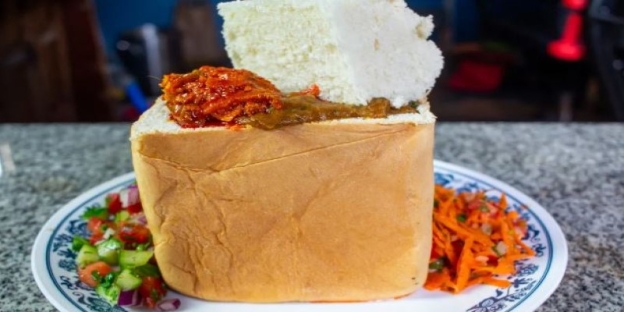
Durban is famous for bunny chow, hollowed bread filled with curry, while the wine country in Stellenbosch offers elegant pairings of food and world-class vintages. Traveling here reveals how cultures—Zulu, Xhosa, Dutch, Indian—each left their imprint, making South Africa one of the best foodie trips for those who crave variety.
Greece’s Neighbor Cyprus: A Small Island With Big Taste
Greece often overshadows Cyprus, but its food identity is distinct. Halloumi cheese is perhaps its most famous export, grilled until golden and served with a lemon. Meze spreads mirror those of Lebanon, featuring hummus, olives, and souvlaki, but always with a Cypriot twist.
In seaside towns, octopus is hung in the sun before being charred over fire, while mountain villages celebrate with slow-cooked lamb kleftiko, sealed in clay ovens. Cyprus demonstrates how a small island can offer flavors as rich and layered as its history.
Colombia: Coffee, Arepas, And Amazon Bounty
Colombia’s reputation as a coffee giant is deserved, but its food story is richer still. Arepas—corn cakes—come in dozens of varieties, from cheesy Antioquian styles to sweet coastal versions. Bandeja paisa, a platter of beans, rice, plantains, meats, and avocado, reflects the abundance of Medellín.
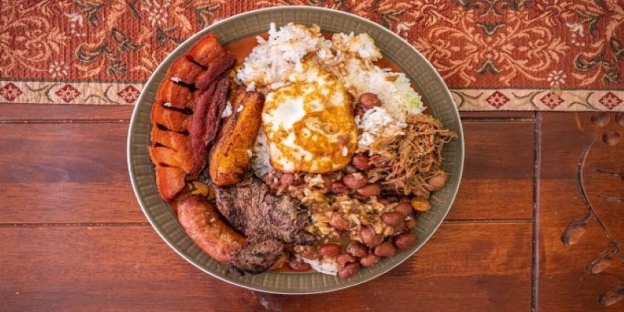
Along the Caribbean coast, ceviche is reimagined with coconut milk, while Amazon regions introduce exotic fruits rarely seen elsewhere. Culinary exploration in Colombia proves that the country's diverse climates translate into one of Latin America's most exciting food journeys.
Choosing Your Next Culinary Journey
Food is memory. It lingers long after the trip ends, shaping how you recall a place and the people you met there. Culinary travel is about chasing those moments: a bowl of noodles at dawn, bread torn at a communal table, the warmth of strangers offering tea. The best foodie trips remind us that eating is never just about sustenance; it's about connection, history, and joy. Whether your next passport stamp comes from Italy, Ethiopia, or Argentina, let your appetite be your guide. The flavors you discover will be the most lasting souvenir.
Was this helpful? Share your thoughts
- Learned practical methods
- Solved my questions
- Inspired new ideas
-
![How Early Should You Book Tours During Peak Travel Seasons?]() How Early Should You Book Tours During Peak Travel Seasons?
How Early Should You Book Tours During Peak Travel Seasons? -
Travel during peak seasons is no joke. Imagine dreaming for years about seeing the Eiffel Tower, only to arrive and realise every guided tour is sold out. Or paying double the price for a ticket that could have been cheaper if booked earlier. That's why timing is everything when booking tours during the busiest times of year.
Explore More
-
![Skip-The-Line Tickets: Are They Worth The Extra Cost?]() Skip-The-Line Tickets: Are They Worth The Extra Cost?
Skip-The-Line Tickets: Are They Worth The Extra Cost? -
When travellers plan their dream trips, one of the most common frustrations is long lines at famous attractions. Hours wasted in the scorching sun or cold drizzle can drain energy before the experience even begins. That's where skip-the-line tickets promise relief: pay extra, save time, and breeze past the waiting crowd.
Explore More




